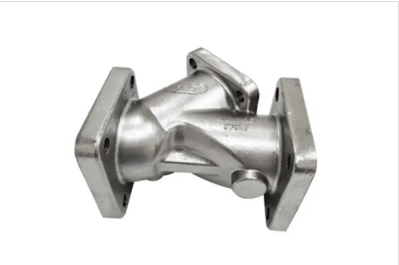Mobile:+86-311-808-126-83
Email:info@ydcastings.com
Comparative Analysis of Impellers and Turbines in Fluid Dynamics Applications
Impellers and Turbines The Heart of Fluid Mechanics
In the realm of fluid mechanics, impellers and turbines play a pivotal role in converting energy between different forms and movements. These devices are essential components in various applications, ranging from industrial machinery to everyday household appliances. Understanding their functions, mechanisms, and applications can provide valuable insights into fluid dynamics and engineering.
What is an Impeller?
An impeller is a rotating component used in pumps and compressors to transfer energy from a motor to the fluid being moved, thus increasing the fluid's velocity and pressure. Typically shaped like a wheel with vanes or blades, the impeller works by imparting kinetic energy to the fluid. As it spins, the vanes push the fluid outward, converting rotational energy into fluid flow.
The design of an impeller is critical to its efficiency and effectiveness. There are various types of impellers, including open, closed, and semi-closed configurations, each suited for different applications. Open impellers are typically used in applications involving slurries, allowing larger particles to pass through, while closed impellers are more efficient and are often found in clean fluid applications.
The Role of Turbines
Turbines, on the other hand, are devices that extract energy from fluid flow and convert it into mechanical work. They are commonly found in power generation systems, where water or steam rotates the turbine blades to produce electricity. Turbines can operate on various principles, but the main ones include impulse and reaction mechanisms.
impeller and turbine

Impulse turbines use jets of fluid to strike the blades, causing them to rotate. The energy is transferred through the impact of the fluid, making these turbines highly effective in scenarios where high-speed fluid jets are available. Reaction turbines, in contrast, act on the principle of pressure difference. As fluid passes over the blades, it causes a change in pressure, leading to the rotation of the turbine. This design is particularly advantageous in hydropower applications, where the elevation drop of water generates significant energy.
Applications in Industry
The applications of impellers and turbines are vast, covering multiple industries including water treatment, energy production, and HVAC systems. For instance, in municipal water treatment facilities, impellers are used in centrifugal pumps to move water from one place to another, ensuring a consistent supply of clean water to communities. In power plants, turbines harness the energy from flowing water or steam, contributing to the generation of electricity that powers homes and businesses.
Furthermore, these devices are integral to the process of aeration in wastewater treatment plants. Impellers create turbulence in water, promoting the mixing of air and facilitating the biological processes necessary for breaking down organic matter. In industrial settings, turbines are employed in gas and steam cycles to optimize energy production and efficiency.
The Future of Impellers and Turbines
As technology advances, the designs and applications of impellers and turbines continue to evolve. Innovations such as computational fluid dynamics (CFD) have allowed engineers to simulate and analyze fluid behavior more accurately, leading to more efficient designs. Furthermore, the integration of smart technologies and sensors can enhance the performance and reliability of these devices, enabling real-time monitoring and maintenance.
In conclusion, impellers and turbines are fundamental components in the field of fluid mechanics, playing crucial roles in energy transfer and conversion. Their applications span a wide range of industries, contributing to efficient water management, energy production, and environmental sustainability. As we move forward, ongoing research and innovation in this field promise to enhance the effectiveness and efficiency of these vital systems, ensuring they meet the demands of a rapidly evolving world.
-
Why Should You Invest in Superior Pump Castings for Your Equipment?NewsJun.09,2025
-
Unlock Performance Potential with Stainless Impellers and Aluminum End CapsNewsJun.09,2025
-
Revolutionize Your Machinery with Superior Cast Iron and Aluminum ComponentsNewsJun.09,2025
-
Revolutionize Fluid Dynamics with Premium Pump ComponentsNewsJun.09,2025
-
Optimizing Industrial Systems with Essential Valve ComponentsNewsJun.09,2025
-
Elevate Grid Efficiency with High-Precision Power CastingsNewsJun.09,2025











